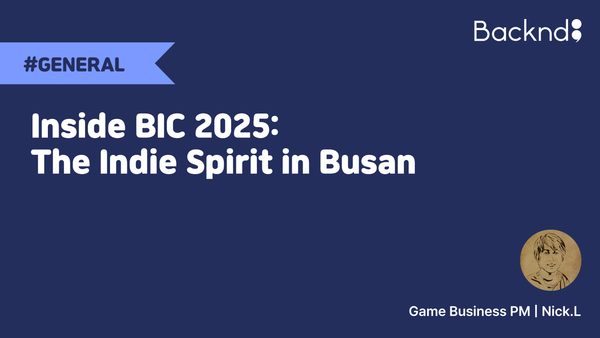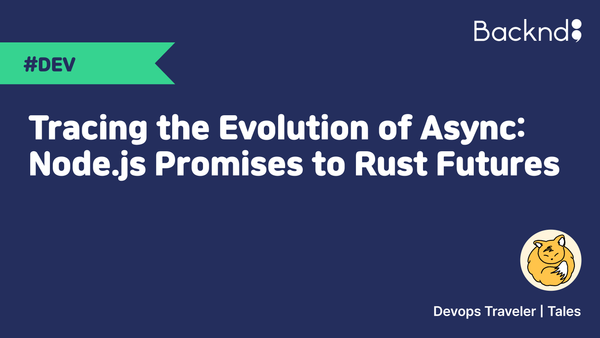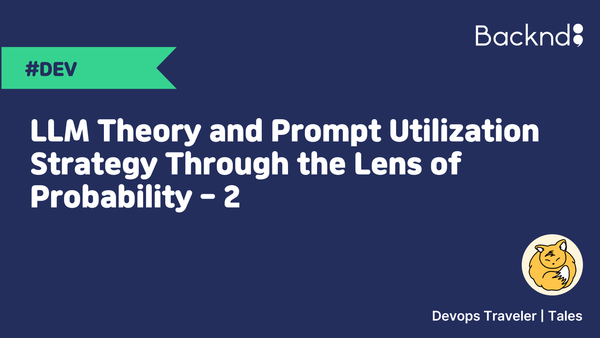Key Product Management Concepts Every B2B PM Should Know
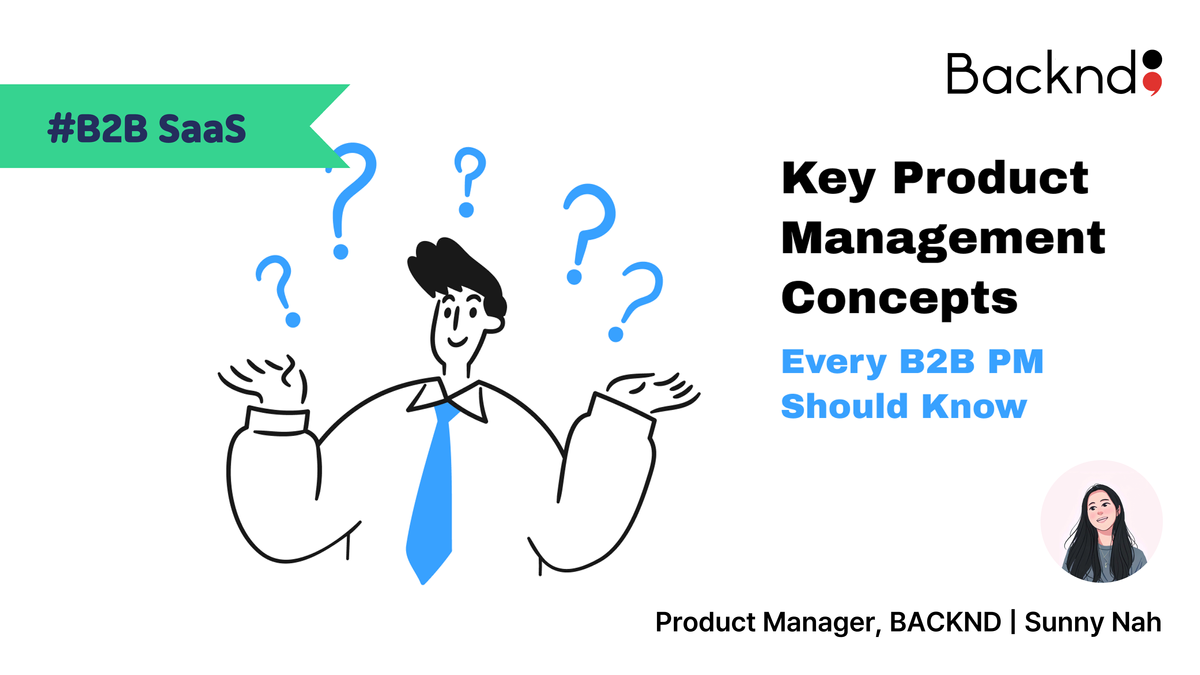
Written by BACKND Product Manger Sunny, 17 January 2025
Why Do We Work This Way?
Many companies emphasize Lean Startup and Agile Methodology, pursuing strategies for rapid growth through frequent experimentation. However, BACKND operates differently, which often raises a few questions:
“We work with a Chapter-based structure. Is this really effective?”
“There are many failure stories about adopting the Squad approach. Should we still consider it?”
“It seems we’re not applying Agile Methodology. Is that okay?”
“We don’t run Experiments frequently. Are we headed in the wrong direction?”
This post was prepared to address these questions and provide insights into the reasoning behind BACKND’s approach. Initially presented during an internal town hall, it now serves as part of our official onboarding materials for new hires. In this post, we’ll cover the following topics:
- Key Concepts
- B2C vs. B2B - Business types by target
- Functional vs. Cross-functional - Organizational Structure
- Waterfall vs. Agile - Project Methodologies
- PMs Who Are Tasked with Maximizing the Impact of Decisions
We hope this post helps you understand your company structure and reflect on your role as a PM. Let’s get started! 😊
Concepts: Do We Really Understand Them?
B2C, B2B, functional teams, cross-functional teams, Waterfall, Agile—these are all familiar terms. But how well do we truly understand and utilize these concepts?
Before diving into the explanations, let’s start with a quick quiz to check our understanding. This will make exploring these concepts more engaging. And if you get all the answers right, don’t forget to brag in the comments on LinkedIn! 😊
1. B2C vs. B2B - Business types by target
1. Is BACKND a (B2C / B2B) business?
2. In the 2023 Y Combinator* Batch, were the majority of companies (B2C / B2B)?
*Y Combinator is the largest startup accelerator in the U.S.
BACKND is a B2B business which provide game backend server API as a SaaS for developers, catering to a wide range of customers, from small teams to large publishers.
The key characteristics of B2B businesses are standardization, reliability, and trust. In B2B, direct communication with customers is crucial to gather requirements and ensure delivery on time, which contrasts with the approach in B2C businesses.
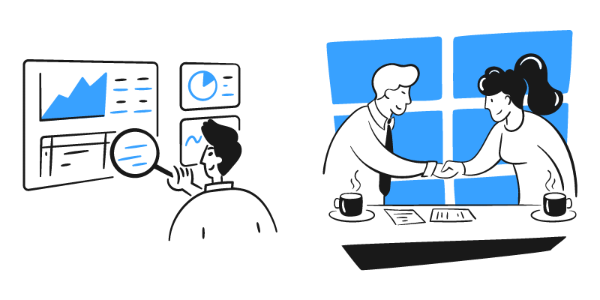
| B2C | B2B | |
|---|---|---|
| Goal | Influence the actions of a wide audience. | Support other businesses’ success. |
| Idea Validation | Conduct multiple A/B tests to identify patterns and determine the best approach. | - Directly listen to customer requirements - For experiments tied to customer businesses, share the roadmap, gain approval, and release as promised. |
| Core Principle | Test and Learn | Standardization, stability, and trust |
| User vs. Buyer | Buyer = User | Buyer ≠ User |
Strengths and Challenges
A significant advantage of B2B is the ability to directly listen to customer requirements and ask clarifying questions. This allows for setting a clear direction without the need for complex experiments.
However, challenges arise when critical requirements emerge urgently, or when requests from a few customers have the potential to significantly impact the overall roadmap. In such cases, one of the key responsibilities of a B2B PM is determining whether these requirements can be standardized or need to be tailored for specific customers.
| Category | B2C Product Team | B2B Product Team |
|---|---|---|
| Advantages |
- Can experiment relatively freely. - Results are clearly represented in numbers. |
- Can directly ask customers for their input. - Results can be expressed qualitatively through language. |
| Challenges |
- Often unclear what customers want. - Speed is often prioritized over quality. |
- Sudden critical requirements from key customers make it challenging to adjust pre-agreed roadmaps. - Difficult to determine if requests from a few customers should be standardized for the product. - Longer release cycles make it harder to see results quickly. - Every mistake can be highly critical. |
- BACKND is a B2B business.
- The majority of companies selected for the 2023 Y Combinator (YC) Batch were B2B. Specifically, 54% in the Winter Batch and 70% in the Summer Batch were B2B companies. This indicates a growing emphasis on B2B startups in recent years, reflecting market trends and investor interest.
2. Functional vs. Cross-functional - Organizational Structure
- What is the difference between functional teams and cross-functional teams?
- The term "Squad" was introduced by_________ (company name).
- A "Squad" is a (functional team / cross-functional team).
- A "Chapter" is a (functional team / cross-functional team).
Differences Between Functional Teams and Cross-Functional Teams
A Functional Team is composed of individuals with the same expertise, while a Cross-Functional Team consists of individuals united by a shared goal. BACKND primarily operates with functional teams but incorporates cross-functional structures when necessary.

| Category | Functional Team | Cross-functional Team |
|---|---|---|
| Definition | - A team consisting of individuals with expertise in the same field. | - A team consisting of individuals with the same purpose or goal. |
| Work Process |
1. Among several methods (a, b, c, d) to achieve goal A, a specific person (e.g., management) intervenes and decides on method a. 2. To implement a, team members are assigned from each functional team. (This creates a temporary cross-functional team.) |
Strengths and Challenges
BACKND operates primarily with functional teams due to the high technical interdependencies of its products. For example, tasks like changing pricing plans require seamless integration across various stages: game development by customers, usage tracking by end-users, and billing calculations. To address this, projects are assigned to members of functional teams with deep technical expertise.
However, before assigning responsibilities, communication delays or unnecessary tagging can lead to inefficiencies in coordination. To address this, BACKND continuously works to refine its organizational structure and communication systems.
In areas with low technical interdependence and a need for swift decision-making, such as the customer acquisition phase, BACKND employs cross-functional teams. These teams can make decisions and execute them quickly within the team, enabling agile improvements to the initial customer experience while compensating for the limitations of functional teams.
| Category | Functional Team | Cross-functional Team |
|---|---|---|
| Strengths | - When there is high interdependence between products, decisions are made quickly. | - When modifications occur within a product, decisions are made quickly. |
| Drawbacks |
- Individual members often lack ownership over the product, and the product loses its owner after launch. - Without active communication within functional teams, it becomes difficult to identify responsibilities in other teams. This slows progress when issues arise as it takes longer to locate the responsible person. |
- Excessive ownership can lead to competition between teams to deprioritize others. - Members may become so immersed in their own product that they fail to recognize dependencies with other products. This delays decision-making for projects involving multiple products. |
BACKND refers to functional teams as “Chapters” and cross-functional teams as “Squads,” terms borrowed from Spotify’s organizational model. Interestingly, Spotify’s model has been deemed a failure!
The primary reasons cited for its failure include teams becoming overly focused on their own priorities, leading to unnecessary competition, and a lack of accountability for technical decision-making. If you’re exploring organizational structures, be sure to check out the article discussing the reasons behind Spotify’s Squad model failure "Failed#SquadGoals"
Various Names for Cross-Functional Teams
Cross-functional teams are known by different names depending on the company, much like regional differences in terms such as Shrimp vs. Prawn or Cilantro vs. Coriander. If someone refers to their organization's team as a "Silo," you might guess they come from Toss. If they call it a "Squad," it could suggest Spotify, and if they use "two-pizza team," you might assume AWS.

- A functional team consists of members with similar expertise, while a cross-functional team brings together individuals with diverse skills to achieve a shared goal.
- The term "Squad" was popularized by Spotify.
- "Squad" represents a cross-functional team structure.
- "Chapter" aligns with the concept of a functional team.
3. Waterfall vs. Agile - Project Methodologies
- What is the difference between Lean Startup and Agile Methodology?
- Does Agile Methodology always require cross-functional teams? (T/F)
Differences Between Waterfall and Agile

BACKND primarily adopts the Waterfall approach. Its services are offered as a Software Development Kit (SDK). Once developers integrate the SDK during game development, the version often remains unchanged until the game's service lifecycle concludes (or is terminated). For products with such low flexibility, delivering improved versions quickly to customers becomes a challenge, making the Waterfall Methodology a more appropriate and effective choice.
| Category | Waterfall | Agile |
|---|---|---|
| Requirements | - Clearly defined during the initial stage. | - Adapted during each iteration. |
| Core Approach |
- Requires significant time and effort to analyze and document requirements. - Documentation must include all details necessary for development, such as workflows, data usage, wireframes, and text. |
- Active communication and collaboration among team members are essential due to frequent changes. - User stories are shared, allowing designers and developers to freely devise solutions. |
| Best Fit |
- Projects with low variability and minimal flexibility. - Large-scale launches with high interdependence between products. |
- Projects requiring continuous improvements based on feedback. - Companies needing to respond quickly to market changes. |
However, the Waterfall Methodology can lead to significant challenges if requirements are not clearly defined during the initial stages. For instance, if critical usage scenarios are overlooked during the initial SDK design, making adjustments later requires addressing dependencies with already-deployed games. This process can result in substantial time and resource inefficiencies.
To address these limitations, BACKND operates an experimental team that applies Agile Methodology. This team, structured as a cross-functional team, focuses on areas with minimal impact on game stability. By conducting rapid iterations and experiments, they progressively improve the product while complementing the traditional Waterfall Methodology.
| Category | Waterfall | Agile |
|---|---|---|
| Cautions |
- If requirements are not clearly defined during the initial stage, disasters can occur. Essential features may be missed, or months might be wasted developing unnecessary ones. - Long development periods come with the risk of changing customer needs or market conditions. - Making changes often requires reworking the entire plan, making it difficult to respond quickly to change. |
- Since changes are expected and requirements are often agreed upon through discussions, documentation is usually not maintained. This makes it hard to track progress through deliverables. - Projects rely heavily on communication and collaboration. If team cohesion is weak, progress can stall. - Agile demands a high level of adaptability, requiring team members to be skilled and well-versed in their roles. |
Beyond Dichotomy
Sometimes Waterfall and Agile are often mistakenly perceived as opposites, but they are not inherently dichotomous concepts. For instance, a Waterfall that does not clearly define requirements during the initial stages is not Agile—it is simply a failed Waterfall. Similarly, an Agile process that lacks flexibility and fails to adapt to change is not Waterfall—it is merely a failed Agile.
- Both Lean Startup and Agile Methodology focus on rapid feedback and iteration to improve products. However, Lean Startup primarily applies to the initial idea validation stage, whereas Agile is implemented across the entire software development life-cycle.
- Agile Methodology do not necessarily require cross-functional teams. However, it is true that the iterative loops of design, development, and testing are more effective within cross-functional team structures.
Summary: PMs Who Are Tasked with Maximizing the Impact of Decisions
Being a PM is all about making strategic choices. BACKND adopted a B2B model, functional team structure, and the Waterfall Methodology because these were deemed most suitable for its circumstances at the time. Within this framework, the PM's mission is to achieve objectives, address weaknesses, and seize opportunities.
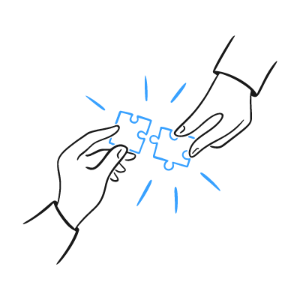
At BACKND, PMs focus on maximizing opportunities by conducting customer interviews and developing prototypes to clearly identify requirements early in the process. To tackle decision-making weaknesses in functional teams, PMs should actively share positive customer feedback to enhance team ownership and mitigate potential disengagement or demoralization. Additionally, they work to establish clear communication frameworks for seamless collaboration across departments. They are also deeply involved in the QA process to ensure stability and reliability
What choices has your company made? How have those decisions shaped your opportunities and challenges? As PMs, we must constantly ask, adapt, and move forward. I hope this article offers you a starting point or a bit of clarity. Thank you for taking the time to read! 😊
References:
- Kim Young Wook. Product Management. Hanbit Media, 2023.
Special thanks to the brilliant PMs, POs, and planners I met during book club discussions for their invaluable insights!

© 2025 AFI, INC. All Rights Reserved. All Pictures cannot be copied without permission.

![[External Essay] Gamescom 2025 Interactions](/content/images/size/w600/2025/09/------1.png)
